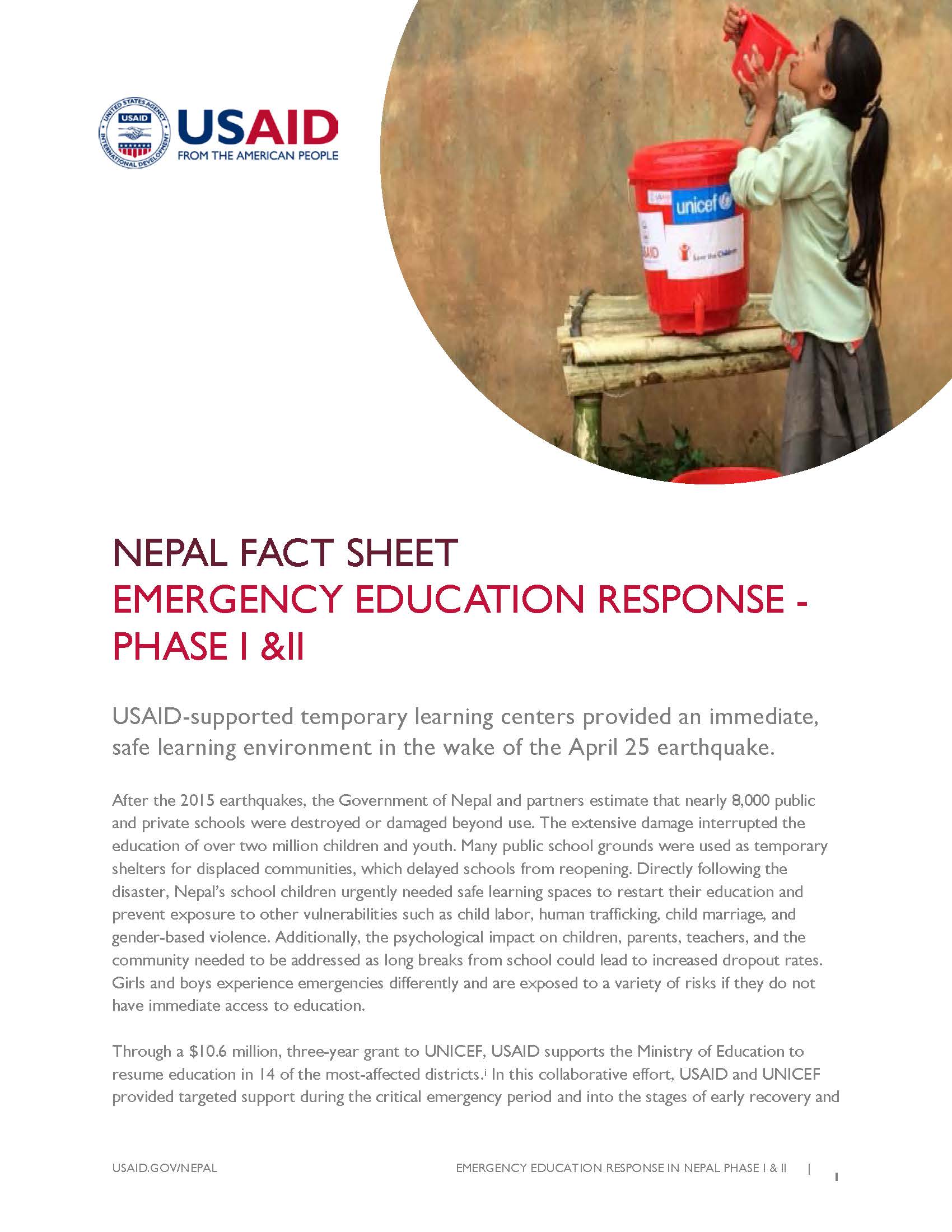USAID-supported temporary learning centers provided an immediate, safe learning environment in the wake of the April 25 earthquake.
After the 2015 earthquakes, the Government of Nepal and partners estimate that nearly 8,000 public and private schools were destroyed or damaged beyond use. The extensive damage interrupted the education of over two million children and youth. Many public school grounds were used as temporary shelters for displaced communities, which delayed schools from reopening. Directly following the disaster, Nepal’s school children urgently needed safe learning spaces to restart their education and prevent exposure to other vulnerabilities such as child labor, human trafficking, child marriage, and gender-based violence. Additionally, the psychological impact on children, parents, teachers, and the community needed to be addressed as long breaks from school could lead to increased dropout rates. Girls and boys experience emergencies differently and are exposed to a variety of risks if they do not have immediate access to education.
Through a $10.6 million, three-year grant to UNICEF, USAID supports the Ministry of Education to resume education in 14 of the most-affected districts.[i] In this collaborative effort, USAID and UNICEF provided targeted support during the critical emergency period and into the stages of early recovery and continues to provide a strong response to children’s education needs while permanent schools remain under construction.








Comment
Make a general inquiry or suggest an improvement.